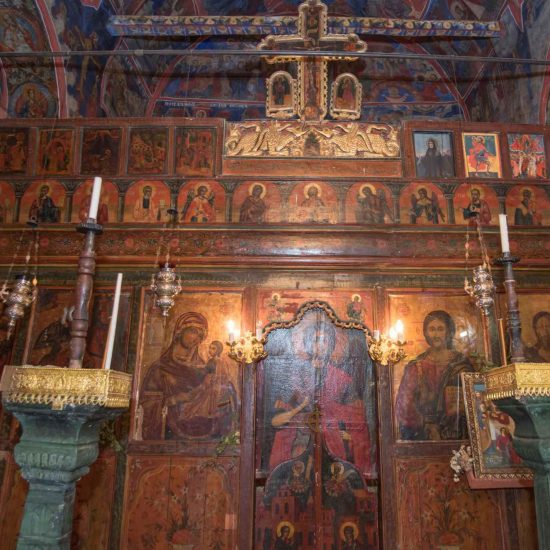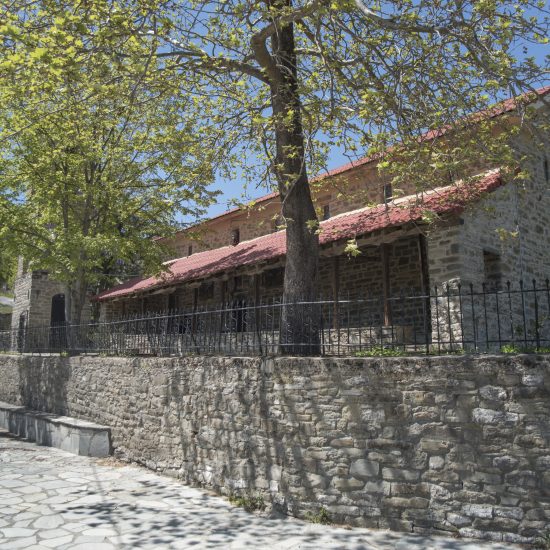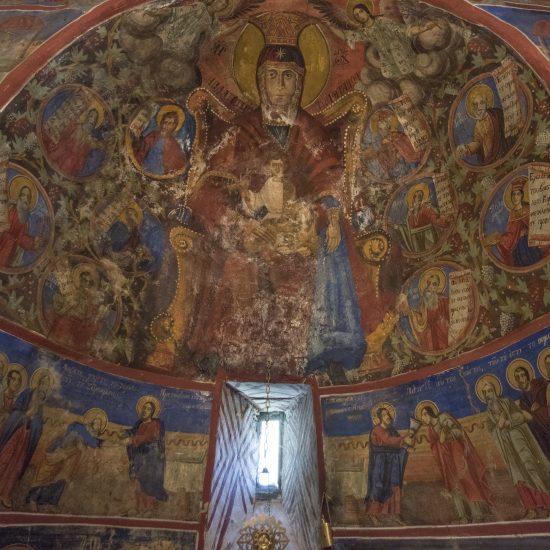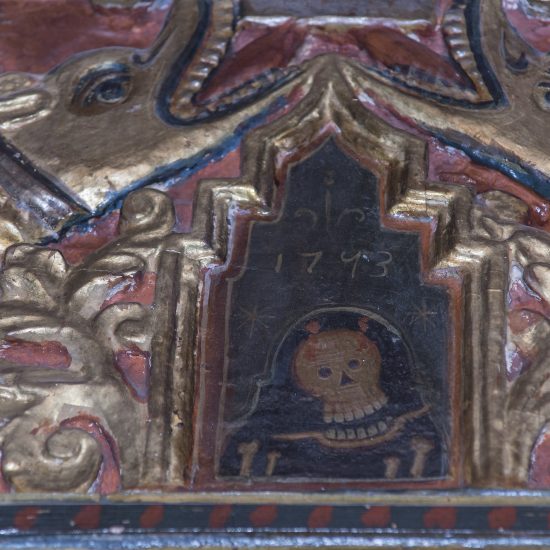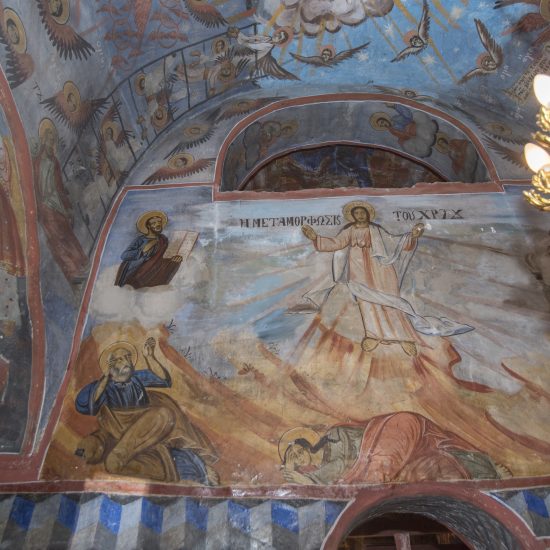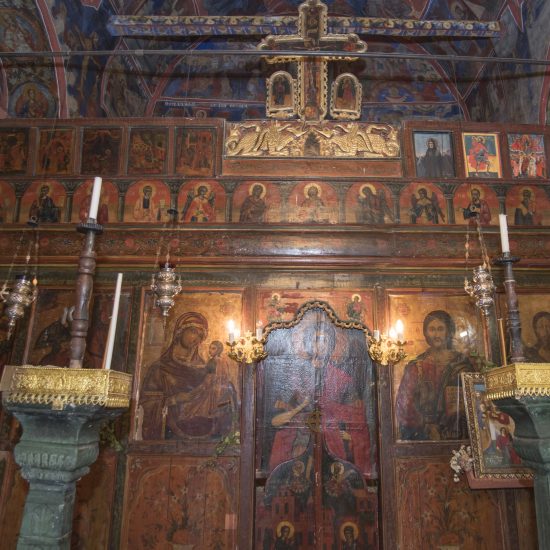Church of St. Demetrios (Mesolouri)
per person
The church of St. Demetrios is a three-aisled vaulted basilica with a multifaceted external apse, a raised narthex-gynaeconite on the west and an open portico on the south side, where the main entrance is. The construction of the church dates back to 1778, as confirmed by two surviving inscriptions on the outside and inside of the main entrance door on the south wall. On the lintel of the door the embossed inscription reveals the year of the cross on both sides with the apotropaic tetragram “IC ΧC ΝΗ ΚΑ”. Inside the building, above the entrance, the long written ownership inscription repeats the year of construction, provides the sponsors’ names, the well-known chieftains Tosca and Gogos, and refers to the hagiography of the temple by the Samaritan Adam Christos Kraias and his student Zisis Ioannou Dova, which is completed on October 17, 1867. The inscription is, also, referred to the then name of the settlement as “Mesovouni” with a later addition of the phrase “renamed Mesolourion”.
The temple is built with coarsely carved domes of different sizes. The eastern wall and especially the arch of the Sanctuary have been built with greater care, with an obvious effort of imitation of the isodomic system. It is covered with a couple roof, initially of slates that are kept only in the arch. In addition to the central doorway in the middle of the south wall, a second door opens at the west end-point of the same wall with access to the narthex. The independent belfry is a newer addition.
The inside part of the temple is entirely painted. The iconographic program includes an extensive Christological and theomitary cycle, as well as scenes inspired by the Liturgy. Characteristic of the painting tradition of the Samaritan painter is the strong contrast between cobalt blue and red in the background, in buildings and in clothing. The multi-faceted compositions with a clear influence of western painting, such as the Betrayal of Judas and the Assumption of the Virgin Mary, make a special impression. Remarkable is the depiction of the executioners of Herod in the Massacre of the Innocents with features that refer to modern robbers, a fact that is observed in other post-Byzantine temples, too. The new martyr George from Tzourhli (Saint George) is also depicted. Of particular interest is the depiction, above the entrance, of Abbot Sisoi in front of the open sarcophagus of Alexander the Great, a topic that is widespread in the post-Byzantine years. The scene is accompanied by a variant of a Byzantine epigram regarding the inevitability of death. The decoration of the church is enriched with scenes of punishment-death of the greedy, the hypocrite -about a priest-, scenes of great anthropological and folklore interest.
The iconostasis of the church is wooden and has painted floral decoration. The year 1779 is written in two despotic icons, in that of the apostles Peter and Paul with the model of the church, and in that of Saint Demetrius. The Sorrows are gilded and bear an inscription of 1793. The church has also a rich collection of portable icons.
Source/References
Accessibility: Due to a short staircase the church is not accessible for those in a wheelchair or with mobility difficulties.


